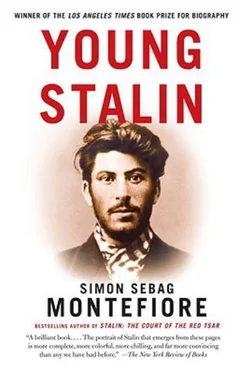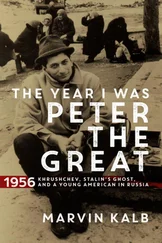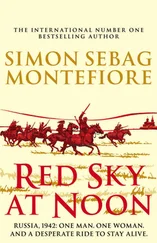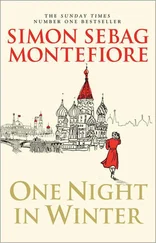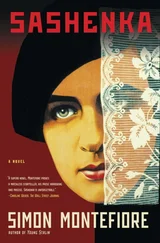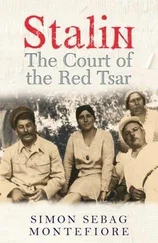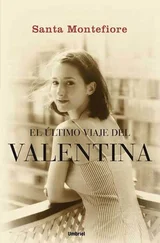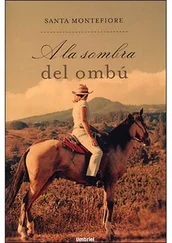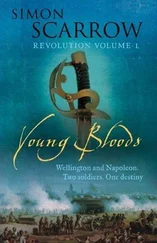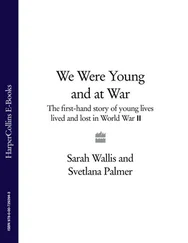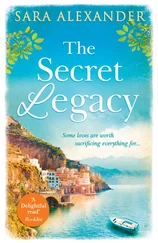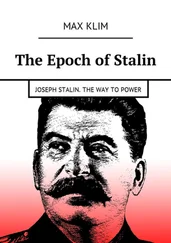They are in fact absolutely the same man. It is clear from hostile and friendly witnesses alike that Stalin was always exceptional, even from childhood. We have relied on Trotsky’s unrecognizably prejudiced portrait for too long. The truth was different. Trotsky’s view tells us more about his own vanity, snobbery and lack of political skills than about the early Stalin. So the first aim of this work is to reveal the true record of Stalin’s rise, as unblemished as possible by either the Stalinist cult or the anti-Stalin conspiracy-theory industry.
There is a tradition of biographies dealing with the early careers of great statesmen. Winston Churchill wrote of his own youth and there have been many works on his early career. The same goes for many other historical titans, such as both presidential Roosevelts. Young Hitler has become an industry, though no work comes close to the outstanding first volume of Ian Kershaw’s Hitler 1889–1936: Hubris .
On Stalin, in a field of thousands of books, there have been just two serious Western works on his pre-1917 years: the excellent political-psychological Stalin as Revolutionary by Robert Tucker (1974), written long before the new archives were opened; and a Cold War work of anti-Stalin conspiracy-theory by Edward Ellis Smith (1967), who argues that Stalin was a Tsarist agent. There have been more in Russia, mainly journalistic sensationalism. However, the outstanding work is Alexander Ostrovsky’s magisterial, indefatigable Kto stoyal za spinoi Stalina? (Who Was Behind Stalin?) (2002). My own work is indebted to all three.
So much of the inexplicable about the Soviet experience—the hatred of the peasantry for example, the secrecy and paranoia, the murderous witch hunt of the Great Terror, the placing of the Party above family and life itself, the suspicion of the USSR’s own espionage that led to the success of Hitler’s 1941 surprise attack—was the result of the underground life, the konspiratsia of the Okhrana and the revolutionaries, and also the Caucasian values and style of Stalin. And not just of Stalin.
By 1917, Stalin knew many of the characters who would form the Soviet elite and his court in the years of supreme power. The violence and clannishness of the Caucasians, men like Stalin, Ordzhonikidze and Shaumian, played a special role in the formation of the USSR at least as great as the contributions of the Latvians, Poles, Jews and perhaps even Russians. They were the essence of the “Committeemen,” who formed the heart of the Bolshevik Party and were likely to support Stalin against intellectuals, Jews, émigrés and particularly the brilliant, haughty Trotsky. Such types took to the brutality of the Civil War (and to the liquidation of the peasantry, and to the Terror) because, like Stalin, indeed alongside him, they had been raised in the same streets, had shared gang warfare, clan rivalries, and ethnic slaughter, and had embraced the same culture of violence. My approach avoids much of the psycho-history that has both obscured and oversimplified our understanding of Stalin and Hitler. As I hope this book shows, Stalin was formed by much more than a miserable childhood, just as the USSR was formed by much more than Marxist ideology.
Yet the formation of Stalin’s character is particularly important because the nature of his rule was so personal. Furthermore, Lenin and Stalin created the idiosyncratic Soviet system in the image of their ruthless little circle of conspirators before the Revolution. Indeed much of the tragedy of Leninism-Stalinism is comprehensible only if one realizes that the Bolsheviks continued to behave in the same clandestine style whether they formed the government of the world’s greatest empire in the Kremlin or an obscure little cabal in the backroom of a Tiflis tavern.
It seems that Russia today—dominated by, and accustomed to, autocracy and empire, and lacking strong civic institutions especially after the shattering of its society by the Bolshevik Terror—is destined to be ruled by self-promoting cliques for some time yet. On a wider plane the murky world of terrorism is more relevant than ever today: terrorist organizations, whether Bolshevik at the beginning of the twentieth century or Jihadi at the start of the twenty-first, have much in common.
In 1917, Stalin had known Lenin for twelve years and many of the others for over twenty. So this is not just a biography but the chronicle of their milieu, a pre-history of the USSR itself, a study of the subterranean worm and the silent chrysalis before it hatched the steel-winged butterfly. {1} 1 1. Historians will find out: A. Mgeladze, Stalin kakim ya ego znal (henceforth Mgeladze), pp. 240–41. RGASPI 558.11.787.2 Stalin to Zhdanov and Pospelov, 24 Sept. 1940—ban this book. All children alike: E. Radzinsky, Stalin , p. 11. All childhoods are the same, burn this: D. Volkogonov, Stalin: Triumph and Tragedy , p. 241. Boris Ilizarov, Tainaya zhizn Stalina (henceforth Ilizarov), p. 99.
FAMILY
Vissarion “Beso” Djugashvili, cobbler, father
Ekaterina “Keke” Geladze Djugashvili, mother
STALIN, Josef Vissarionovich Djugashvili, “Soso,” “Koba”
GORI
Yakov “Koba” Egnatashvili, Gori wrestling champion, merchant, possible father
Ivan “Vaso” Egnatashvili, son of Yakov, lifelong friend of Stalin
Alexander “Sasha” Egnatashvili, son of Yakov, courtier of Stalin, “the Rabbit”
Damian Davrichewy, police officer of Gori and possible father
Josef Davrichewy, son of Damian, Stalin’s childhood friend, political bank robber, and later pilot, spy and memoirist in France
Josef Iremashvili, childhood friend in Gori and Tiflis Seminary, Menshevik memoirist
Father Christopher Charkviani, Gori priest, protector and possible father, and his son, Kote Charkviani
Peter “Peta” Kapanadze, Gori and Tiflis Seminary, priest and lifelong friend
Giorgi Elisabedashvili, Gori friend, Bolshevik
Dato Gasitashvili, Beso’s cobbling apprentice
THE SCHOOLMASTERS
Simon Gogchilidze, Stalin’s singing teacher and patron at the Gori Church School
Prince David Abashidze, Father Dmitri, “Black Spot,” priestly pedant at the Tiflis Seminary and Stalin’s hated persecutor
THE GIRLS
Natalia “Natasha” Kirtava, landlady and girlfriend in Batumi
Alvasi Talakvadze, protégée and girlfriend in Baku
Ludmilla Stal, Bolshevik activist and girlfriend in Baku and St. Petersburg
Stefania Petrovskaya, Odessan noblewoman, exile, mistress and fiancée in Solvychegodsk and Baku
Pelageya “Polia” Onufrieva, “Glamourpuss,” schoolgirl mistress in Vologda
Serafima Khoroshenina, mistress and partner in Solvychegodsk
Maria Kuzakova, landlady and mistress in Solvychegodsk, mother of Constantine
Tatiana “Tania” Slavatinskaya, married Bolshevik and mistress
Valentina Lobova, Bolshevik fixer and probable mistress
Lidia Pereprygina, thirteen-year-old orphan seduced by Stalin in Turukhansk and mother of two children by him, fiancée
COMRADES, ENEMIES AND RIVALS—TIFLIS AND BAKU
Lado Ketskhoveli, Gori priest’s son, Stalin’s Bolshevik mentor and hero
Prince Alexander “Sasha”Tsulukidze, rich aristocrat, Stalin’s Bolshevik mentor and hero
Mikha Tskhakaya, founder of Georgian SDs (Social-Democrats), early Bolshevik, Stalin’s patron
Philip Makharadze, Bolshevik and Stalin’s sometime ally
Budu “the Barrel” Mdivani, actor and Bolshevik terrorist, Stalin’s ally
Abel Yenukidze, early Bolshevik, friend of Alliluyevs, Svanidzes and Stalin
Silibistro “Silva” Jibladze, ex-seminarist, Menshevik firebrand
Читать дальше
